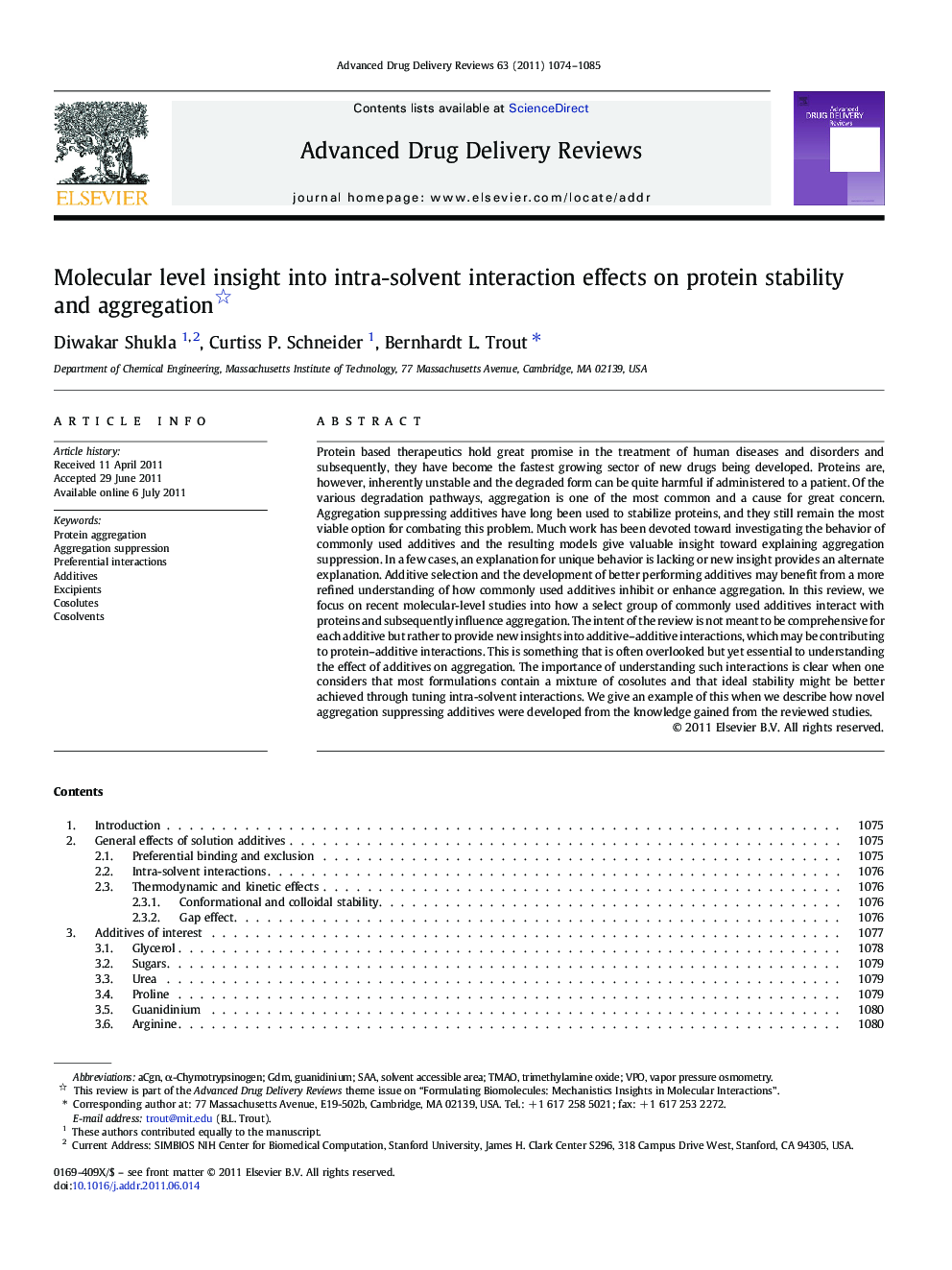| Article ID | Journal | Published Year | Pages | File Type |
|---|---|---|---|---|
| 2071263 | Advanced Drug Delivery Reviews | 2011 | 12 Pages |
Protein based therapeutics hold great promise in the treatment of human diseases and disorders and subsequently, they have become the fastest growing sector of new drugs being developed. Proteins are, however, inherently unstable and the degraded form can be quite harmful if administered to a patient. Of the various degradation pathways, aggregation is one of the most common and a cause for great concern. Aggregation suppressing additives have long been used to stabilize proteins, and they still remain the most viable option for combating this problem. Much work has been devoted toward investigating the behavior of commonly used additives and the resulting models give valuable insight toward explaining aggregation suppression. In a few cases, an explanation for unique behavior is lacking or new insight provides an alternate explanation. Additive selection and the development of better performing additives may benefit from a more refined understanding of how commonly used additives inhibit or enhance aggregation. In this review, we focus on recent molecular-level studies into how a select group of commonly used additives interact with proteins and subsequently influence aggregation. The intent of the review is not meant to be comprehensive for each additive but rather to provide new insights into additive–additive interactions, which may be contributing to protein–additive interactions. This is something that is often overlooked but yet essential to understanding the effect of additives on aggregation. The importance of understanding such interactions is clear when one considers that most formulations contain a mixture of cosolutes and that ideal stability might be better achieved through tuning intra-solvent interactions. We give an example of this when we describe how novel aggregation suppressing additives were developed from the knowledge gained from the reviewed studies.
Graphical abstractFigure optionsDownload full-size imageDownload high-quality image (2796 K)Download as PowerPoint slide
